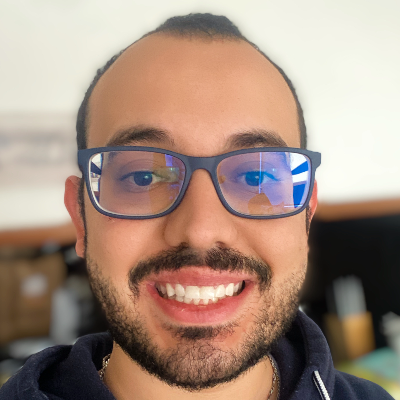Orthopedics
Homework Help & Tutoring
We offer an array of different online Orthopedics tutors, all of whom are advanced in their fields and highly qualified to instruct you.
Orthopedics
What is orthopedics?
Orthopedics (orthopedic surgery) is a branch of medicine concerned with preventing and curing diseases of the locomotor system. The word orthopedics is composed of two Greek words: orthos which means straight/correct and paidion which means a child. The term orthopedics was first used in 1741when Nicholas Andre, a French physician and a university professor, published a book about prevention and correction of the locomotor deformities in children. Andre’s book begins with a drawing of a young crooked tree splinted with a straight post, and this drawing is still used as a symbol of orthopedics. Initially, the word orthopedics was only used to describe certain degenerative conditions affecting children but contemporary orthopedics has a much broader meaning.
The history of orthopedics
The beginning of the 19th century marked the opening of the first orthopedics institutions around the world. In 1838, London opened its orthopedic infirmary, and Boston opened its Orthopedic Institute. The Orthopedic Institute in London opened in 1840. Initially, orthopedic institutions did not have orthopedic specialists as members of their staff. Their teams were mainly comprised of general surgeons who performed duties similar to the ones of general practitioners today. The development of orthopedics as a surgical specialty, awaited the invention of safe and painless surgical techniques and procedures. Until the 1900s, orthopedics mainly performed simple procedures such as excisions, tendon divisions, and amputations. The early orthopedic treatments included correcting various types of deformities such as scoliosis and clubfoot but with time, this list expanded to fractures and dislocations.
The discovery of the X-ray in 1895 was seen as a significant advancement in the diagnostics of orthopedic conditions, but the broader use of this diagnostic imaging technique did not occur until the end of the World War I. The 1930s brought new medical advancements and introduced special tools designed to hold broken pieces of bones together. The closer contact of the broken segments speeded up the healing process and decreased the recovery time. Other medical contraptions such as metal tie-bone braces followed soon after. Even today, these old inventions are still in use but they are made of new and more advanced materials in order to enable more comfortable procedures and ensure better treatment outcomes.
Nowadays, orthopedics is still mostly seen as a surgical branch but it managed to keep certain specific features that make it unique. Apart from surgical treatments, contemporary orthopedics therapy considers the prevention and rehabilitation of traumas and diseases associated with the locomotor system. In the last several decades, the advancements in preventive and therapeutic practice have decreased the incidence of communicable diseases like tuberculosis which affect the locomotor system. As the human average lifespan increases so does the prevalence of osteoporosis, degenerative conditions, and traumas that require orthopedic assistance. Currently, microsurgery and vascular grafts are seen as the most advanced orthopedic procedures but contemporary orthopedics is also using the potentials of arthroscopy and endoscopy in treating joints and tendons in order to ensure minimally invasive procedures. The future of orthopedics, however, lies with the new scientific discoveries in the field of molecular biology. Even today, there are encouraging signs that cartilage stem cells can be successfully used to treat joint defects. The bone morphogenic protein – BMP is used in treating bone fractures and cartilage regeneration procedures.
What are the most used diagnostic procedures in orthopedics?
X-ray screening
The X-ray radiography is one of the most commonly used painless and non-invasive diagnostic techniques in orthopedic medicine. X-ray imaging is one of the essential diagnostic procedures for examining hard and soft tissues because it provides fast and detailed information about the bones and surrounding structures. Even though this procedure uses ionizing X-rays, the dosage needed for obtaining quality images is minimal, so the benefits of using this technique outweigh potential risks associated with radiation.
Computerized tomography
Computerized tomography (CT), also known as computerized axial tomography (CAT) or computer-aided tomography, is a diagnostic technique that uses X-rays fitted inside a special device in order to obtain thin cross-sectional images of soft tissues and hard structures from many different angles. CT uses computer technology to convert these two-dimensional images into three-dimensional representations of scanned objects.
Magnetic resonance imaging
Magnetic resonance imaging (MRI) is a diagnostic technique that uses powerful magnets and different digital sensors to provoke and record changes in molecules (mostly water) that are a part of soft and hard tissues in the body. Unlike CT, MRI is not based on using ionizing rays which is a significant benefit for patients. Nowadays, MRI is considered superior to other diagnostic imaging techniques, but CT still has many benefits over MRI such as higher speed, lower cost, safe use in patients with implantable devices like pacemakers, etc.
References
Agarwal, A., Borley, N., & McLatchie, G. (2017). Orthopaedics. Oxford: Oxford University Press. doi:10.1093/med/9780199608911.003.0016
Agarwal, S. (2012). Current Orthopaedic Practice : A Concise Guide for Postgraduate Exams. Castle Hill Barns, Harley: tfm Publishing Ltd.
Baldwin, A., Hjelde, N., Goumalatsou, C., & Myers, G. (2016). Orthopaedics. Oxford: Oxford University Press. doi:10.1093/med/9780198719021.003.0011
Davidson, T. (2018). Orthopedics. The Gale Encyclopedia of Nursing and Allied Health: N-P. p2602-2605.
Harley, K., & Stock, R. (2016). Trauma and orthopaedics. Oxford: Oxford University Press. doi:10.1093/med/9780199642663.003.0020
Jordan, C., & Mirzabeigi, E. (2000). Atlas of Orthopaedic Surgical Exposures. New York: Thieme.
Kassim, M., & Maffulli, N. (2014). FRCS Trauma and Orthopaedics Exam : A Guide to Clinicals and Vivas. [Place of publication not identified]: eBookPartnership.com.
Manuel, S. P., Mai, C. L., & Brustowicz, R. (2015). Orthopedic Surgery. New York: Oxford University Press. doi:10.1093/med/9780199398348.003.0018
Sponseller, P. D. (2011). Handbook of Pediatric Orthopedics. New York: Thieme.
Staheli, L. T. (2015). Fundamentals of Pediatric Orthopedics. Hagerstown: Wolters Kluwer Health.
To fulfill our tutoring mission of online education, our college homework help and online tutoring centers are standing by 24/7, ready to assist college students who need homework help with all aspects of orthopedics. Our medicine and nursing tutors can help with all your projects, large or small, and we challenge you to find better online orthopedics tutoring anywhere.
College Orthopedics Homework Help
Since we have tutors in all Orthopedics related topics, we can provide a range of different services. Our online Orthopedics tutors will:
- Provide specific insight for homework assignments.
- Review broad conceptual ideas and chapters.
- Simplify complex topics into digestible pieces of information.
- Answer any Orthopedics related questions.
- Tailor instruction to fit your style of learning.
With these capabilities, our college Orthopedics tutors will give you the tools you need to gain a comprehensive knowledge of Orthopedics you can use in future courses.
24HourAnswers Online Orthopedics Tutors
Our tutors are just as dedicated to your success in class as you are, so they are available around the clock to assist you with questions, homework, exam preparation and any Orthopedics related assignments you need extra help completing.
In addition to gaining access to highly qualified tutors, you'll also strengthen your confidence level in the classroom when you work with us. This newfound confidence will allow you to apply your Orthopedics knowledge in future courses and keep your education progressing smoothly.
Because our college Orthopedics tutors are fully remote, seeking their help is easy. Rather than spend valuable time trying to find a local Orthopedics tutor you can trust, just call on our tutors whenever you need them without any conflicting schedules getting in the way.



